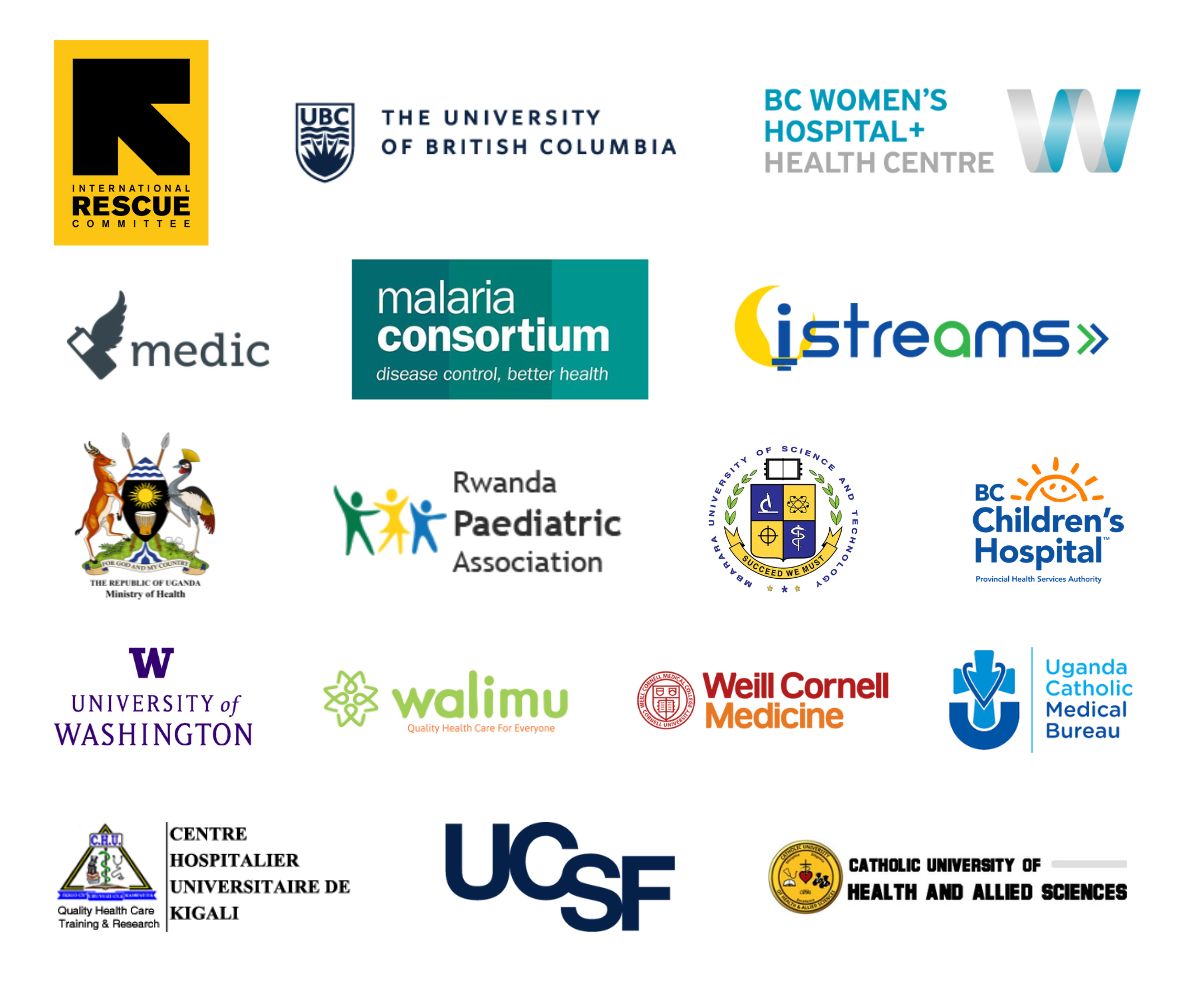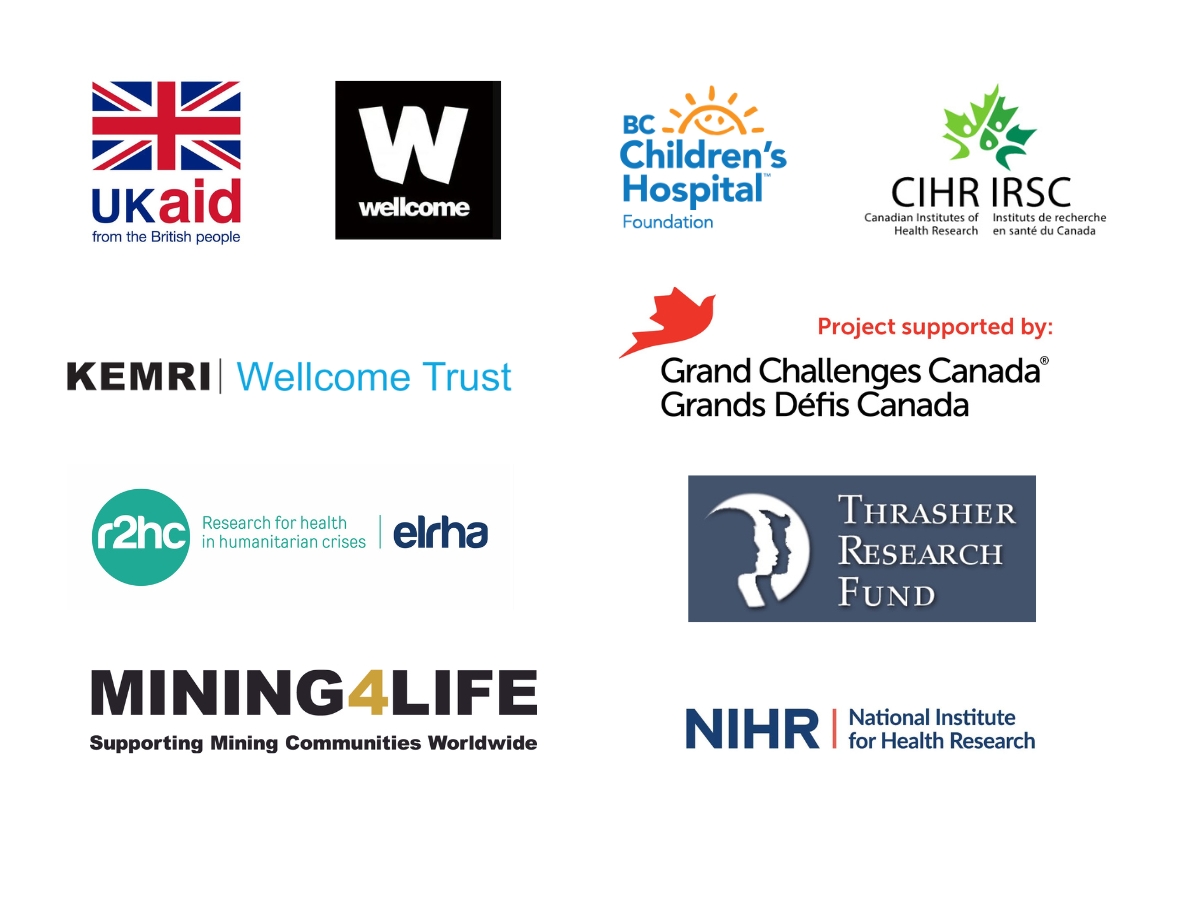Explore how Smart QI Prediction Models are transforming healthcare quality improvement in low-resource settings, and learn about innovative research led by the Institute for Global Health at BC Children’s Hospital and BC Women’s Hospital + Health Centre to enhance patient outcomes through predictive analytics in global health.
Smart QI Prediction Models
Researchers at the Institute for Global Health at BC Children’s and Women’s Hospital, the University of British Columbia, WALIMU, Kenya Medical Research Institute, Rwanda Pediatric Association, iStreams and many other partners have worked collaboratively over the past decade to develop and validate data-driven risk prediction models to improve childhood mortality and morbidity outcomes in triage and discharge in low resource settings.
This suite of tools, called Smart Quality Improvement (QI), includes:
- Smart Triage (0-12 years)
- Smart Discharges
- 0-6 months
- 6 months - 5 years
- 5-16 years (under development)
- 5-13 years within a Refugee cohort
- Mother and newborn dyads
Prediction models have diagnostic and prognostic capabilities to inform decision making. They are developed to help health care providers in estimating the probability or risk of a specific disease or condition being present or of a specific event occurring in the future.
Smart QI has developed digital adaptation kits (DAKs) following the WHO SMART guidelines, to facilitate integration and adoption of Smart Triage and Smart Discharges prediction models with existing digital systems. Paper-based systems are also being developed.
Digital Adaptation Kit for Smart Triage: model and the independent danger signs (Web Annex C)
Digital Adaptation Kit for Smart Discharge: models and risk score calculation can be found in Web Annex E.
Smart Triage (0-12 years)
The Smart Triage predictive model is incorporated into a mobile app that allows healthcare providers to triage pediatric patients efficiently and effectively.
The model uses nine predictor variables to place patients into three triage categories: emergency, priority, and non-urgent. In addition, independent danger signs are embedded in the digital health app that will immediately escalate a patient to a more urgent category. Predictors were selected through a rigorous process with several model development stages. Evaluation is ongoing to ensure feasibility and reproducibility.
Relevant publications
Pre-development:
- Garde A, Zhou G, Raihana S, Dunsmuir D, Karlen W, Dekhordi P, et al. Respiratory rate and pulse oximetry derived information as predictors of hospital admission in young children in Bangladesh: a prospective observational study. BMJ Open. 2016;6(8):e011094.
- Lowlaavar N, Larson CP, Kumbakumba E, Zhou G, Ansermino JM, Singer J, et al. Pediatric in-hospital death from infectious disease in Uganda: Derivation of clinical prediction models. PLoS ONE. 2016;11(3): e0150683.
- Raihana S, Dunsmuir D, Huda T, Zhou G, Rahman QS-u, Garde A, et al. Development and internal validation of a predictive model including pulse oximetry for hospitalization of under-five children in Bangladesh. PLoS ONE. 2016;11(1): e0143213.
- Fung JST, Akech S, Kissoon N, Wiens MO, English M, Ansermino JM. Determining predictors of sepsis at triage among children under 5 years of age in resource-limited settings: A modified Delphi process. PLoS ONE. 2019;14(1): e0211274.
Development:
- Mawji A, Akech S, Mwaniki P, Dunsmuir D, Bone J, Wiens MO, et al. Derivation and internal validation of a data-driven prediction model to guide frontline health workers in triaging children under-five in Nairobi, Kenya. Wellcome Open Research. 2021;4:121
- Mawji A, Li E, Chandna A, Kortz T, Akech S, Wiens MO, et al. Common data elements for predictors of pediatric sepsis: A framework to standardize data collection. PloS ONE. 2021;16(6): e0253051.
- Mawji A, Li E, Dunsmuir D, Komugisha C, Novakowski SK, Wiens MO, et al. Smart triage: Development of a rapid pediatric triage algorithm for use in low-and-middle income countries. Frontiers in Pediatrics. 2022; doi: 10.3389/fped.2022.976870
Feasibility Study:
- Lee V, Dunsmuir D, Businge S, Tumusiime R, Karugaba J, Wiens MO, et al. Evaluation of a digital triage platform in Uganda: A quality improvement initiative to reduce the time to antibiotic administration. PLoS One. 2020;15(10): e0240092.
Pivotal Study Protocol:
- Mawji A, Li E, Komugisha C, Akech S, Dunsmuir D, Wiens MO, et al. Smart Triage: triage and management of sepsis in children using the point-of-care Pediatric Rapid Sepsis Trigger (PRST) tool. BMC Health Services Research. 2020;20:493.
Validation:
- Zhang C, Wiens MO, Dunsmuir D, Pillay Y, Huxford C, Kimutai D, et al. Geographical validation of the Smart Triage model by age group. medRxiv. 2023.06.29.23292059. (in press)
- Kigo J, Kamau S, Mawji A, Mwaniki P, Dunsmuir D, Pillay Y, et al. External validation of a paediatric SMART triage model for use in resource limited facilities. medRxiv. 2023.06.05.23291007. (in press)
- Kamau S, Kigo J, Mwaniki P, Dunsmuir D, Pillay Y, Zhang C, et al. Comparison between the Smart Triage model and the Emergency Triage Assessment and Treatment (ETAT) guidelines in triaging children presenting to the emergency departments of two public hospitals in Kenya. medRxiv. 2023.11.08.23298265. (in press)
- Ansermino JM, Pillay Y, Tagoola A Zhang C, Dunsmuir D, Kamau, et al. Implementation of Smart Triage combined with a quality improvement program for children presenting to facilities in Kenya and Uganda: An interrupted time series analysis. medRxiv. 2024.02.09.24302601v1 (under review)
Implication:
- Li, ECK, Tagoola, A, Komugisha, C, Nabweteme AM, Pillay Y, Ansermino JM, et al. Cost-effectiveness analysis of Smart Triage, a data-driven pediatric sepsis triage platform in Eastern Uganda. BMC Health Serv Res. 2023;23, 932.
- Novakowski SK, Kabajaasi O, Kinshella MW, Pillay Y, Johnson T, Dunsmuir D, et al. Health worker perspectives of Smart Triage, a digital triaging platform for quality improvement at a referral hospital in Uganda: a qualitative analysis. BMC Pediatrics. 2022;22(1):593.
Smart Discharges
0-5 years
The Smart Discharges prediction models are based on candidate predictors collected at admission and used to predict mortality six months post-discharge.
Three models were derived for each age group 0-6-month-olds and 6-60-month-olds. Each model was restricted to eight variables drawing from a different pool of available predictors. The different models utilize:
- Commonly-available clinical variables;
- Commonly-available clinical and social variables; and
- Any of the candidate predictor variables.
Relevant publications:
Pre-development:
- Wiens MO, Kumbakumba E, Larson CP, Ansermino JM, Singer J, Kisson N, et al. Postdischarge mortality in children with acute infectious diseases: derivation of postdischarge mortality prediction models. BMJ Open. 2015;5(11): e009449.
- Lowlaavar N, Larson CP, Kumbakumba E, Zhou G, Ansermino JM, Singer J, et al. Pediatric in-hospital death from infectious disease in Uganda: Derivation of clinical prediction models. PloS One. 2016;11(3): e0150683.
- Wiens MO, Kissoon N, Kumbakumba E, Singer J, Moschovis PP, Ansermino JM, et al. Selecting candidate predictor variables for the modelling of post-discharge mortality from sepsis: a protocol development project. African Health Sciences. 2016;16(1): 162-9.
- Nemetchek BR, Liang LD, Kissoon N, Ansermino JM, Kabakyenga J, Lavoie PM, et al. Predictor variables for post-discharge mortality modelling in infants: a protocol development project. African Health Sciences. 2018;18(4): 1214-25.
Development:
- Wiens MO, Nguyen V, Bone JN, Kumbakumba E, Businge S, Tagoola A, et al. Prediction models for post-discharge mortality among under-five children with suspected sepsis in Uganda: A multicohort analysis. PLoS Global Public Health. 2024;4(4):e0003050.
- Wiens MO, Kissoon N, Ansermino JM, Barigye C, Businge S, Kumbakumba E, et al. Smart Discharges to improve post-discharge health outcomes in children: A prospective before-after study with staggered implementation. 2023;Borealis, V1
Validation:
- Hooft A, Kornblith AE, Umhoza C, Trawin J, Mfuranziza CG, Uwiragiye E, et al. Validation of a risk-prediction model for pediatric post-discharge mortality at two hospitals in Rwanda. 2023;Borealis, V1
Mother and newborn dyads
Pre-development:
- Wiens MO, Trawin J, Pillay Y, Nguyen V, Komugisha C, Kenya-Mugisha N, et al. Prognostic algorithms for post-discharge readmission and mortality among mother-infant dyads: an observational study protocol. Front Epidemiol. 2023;3.
5-16 years
Under development
5-13 years within a Refugee cohort
Under development
Our Team
Dr. Samuel Akech – Principal Investigator, KEMRI-Wellcome Trust Research Programme
Dr. Mark Ansermino – Executive Medical Director, Global Health; Co-Director, Digital Health Innovation Lab at BC Children’s; Professor, UBC Department of Anesthesia, Pharmacology and Therapeutics
Dr. Stephen Businge – Holy Innocents Children’s Hospital, Uganda
Dr. Guy Dumont – Investigator, BC Children’s Hospital; Co-Director, Digital Health Innovation Lab at BC Children’s; Professor, UBC Department of Electrical and Computer Engineering
Dr. Tumubugane Gotharido – Director, Uganda Martyrs Hospital, Ibanda
Dr. Anneka Hooft - Assistant Clinical Professor, University of California San Francisco (UCSF); Pediatric Emergency Care Physician, UCSF Benioff Children’s Hospitals
Dr. Jerome Kabakyenga – Director, Maternal, Newborn and Child Health Institute at Mbarara University of Science and Technology
Dr. Ronald Kasyaba – Assistant Executive Secretary, Uganda Catholic Medical Bureau
Dr. David Kimutai – Paediatrician, Mbagathi County Hospital Kenya
Dr. Niranjan Kissoon – Professor, UBC Departments of Pediatrics and Surgery (Emergency Medicine)
Dr. Aaron E Kornblith – Physician, UCSF Benioff Children’s Hospitals
Dr. Elias Kumbakumba – Physician/Researcher, Mbarara Regional Referral Hospital; Associate Professor, Mbarara University of Science and Technology Faculty of Medicine
Dr. Alfred Lumala – Director, St Josephs Hospital, Kitovu
Dr. Nathan Kenya Mugisha – Executive Director, WALIMU
Dr. Angela Namala, Senior Gynaecologist, Jinja Regional Referral Hospital
Dr. Joseph Ngonzi – Dean, Faculty of Medicine, Mbarara University of Science and Technology, Senior Gynaecologist, Mbarara Regional Referral Hospital
Dr. Charles Olaro, Director Curative Services, Uganda Ministry of Health
Dr. Benard Opar – Director of Programs, WALIMU, Uganda
Dr. Sam Orach – Executive Secretary, Uganda Catholic Medical Bureau
Dr. Florence Oyella – Head of Department Paediatrics, Gulu Regional Referral Hospital
Dr. Jesca Nsungwa Sabiiti, Commissioner for Maternal and Child Health, Ugandan Ministry of Health
Dr. Barak St John – Smart QI Clinical Lead, Kisiizi Hospital
Dr. Emmanuel Tenywa – Head of Department, Paediatrics, Jinja Regional Referral Hospital
Dr. Abner Tagoola – Co-PI, Paediatrics, Jinja Regional Referral Hospital
Dr. Christian Umuhoza – Senior Lecturer College of Medicine and Health Sciences, University of Rwanda;
Head of Pediatrics Emergency Unit, University Teaching Hospital of Kigali (CHUK);
Dr. Emmanuel Uwiragiye – Physician, Ruhengeri Referral Hospital
Dr. Matthew O. Wiens – Investigator, IGH; Assistant Professor, UBC Department of Anesthesia, Pharmacology and Therapeutics
Partners

Funders
